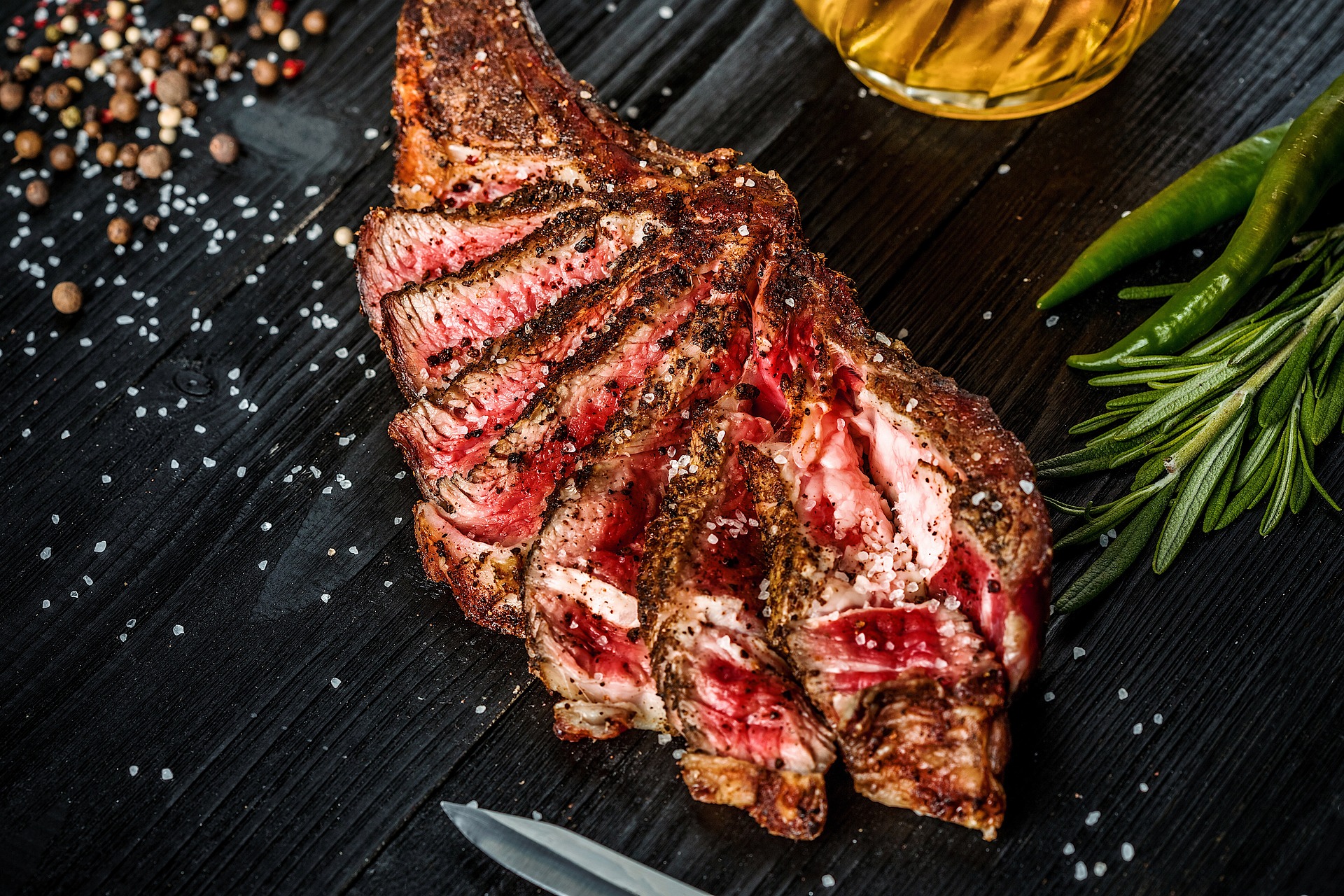Juicy, tender, and perfectly pink on the inside; charred, golden, and gorgeously crisp on the outside. Is there anything better than a really great steak? We’d argue that this dish is almost impossible to top in its ability to satisfy, its intense meaty flavor, and its beautiful culinary versatility. One of the things that transforms a steak from good to phenomenal is its crust. That caramelized outer edge protecting its sinfully tender interior makes every bite of steak exquisite. However, achieving that perfect crust can be tricky. Thankfully, there are a few tips and tricks that will help you achieve this gorgeous golden crust every single time.
Prep your steak

The first thing to remember if you want an excellent crust on your steak is that – in this case – size absolutely matters. In order to create a deliciously golden, caramelized crust, you’ll need a piece of steak that’s big enough to take the heat – at least an inch and a half thick. If your steak is too thin, it will cook too quickly inside before it has the time to develop a good crust on the outside, leaving you with a medium well or well-done steak, which – let’s be honest – no one should ever be eating.
After ensuring you’re steak is thick enough, it’s very important to get it good and dry before cooking. Ideally, you’ll have planned enough ahead to dry it uncovered in the refrigerator for a day or two. The dryer the steak, the better the crust will be. When you’re ready to season and cook, remove the steak from the refrigerator and bring it to room temperature.
The best oils and seasonings

About one hour before you plan to cook, start dry brining your steak. When you’re ready to season, brush all sides of your steak with a neutral oil that has a high smoke point. Because you’ll be cooking over very high heat to achieve a good crust, you’ll need an oil that can withstand extremely high temperatures without burning. Vegetable and canola oil are both great options.
After brushing your steak with oil, season it generously on all sides and set aside to rest at room temperature for at least 45 minutes. During this time, the salt in your seasoning blend will draw the steak’s moisture to the surface, which is known as dry brining. This will give you a deliciously tender steak with a gorgeous crust and tender, juicy center.
The best cooking method for a perfect crust

Some insist that a grill is the way to go when it comes to achieving a great crust on steak. There’s certainly an argument here, as the steak will get deliciously charred grill marks and an intense, wonderfully smoky flavor—but not exactly an even, golden crust. This is because of the open areas between the grill grates. The grill grate design is perfect for allowing the flames to kiss your steak but not really for developing an even crust all over.
To achieve a perfect crust, cook your steak on a thick and heavy flat surface, like a cast iron pan or a flat-top grill plate.
Cooking your steak

For a great crust, you’ll want to cook your steak over very high heat. Preheat your pan until it is screaming hot, then carefully place your seasoned steak in the pan and enjoy that beautiful sizzle song.
Cooks love to debate the age-old question, “To flip or not to flip?” While there are arguments to be made on both sides, we stand firmly in the not-to-flip camp. Especially when trying to achieve a perfectly crisp crust, steak needs time to sit on the heat and let the cooktop work its magic. Every time the steak is flipped or moved, this process is interrupted, and the steak won’t have time to adequately build that caramelization. So, once you’ve placed that steak on the heat, put down the spatula.
Cook on each side—flipping just once, if possible—until you’ve reached your desired temperature. Remove from the heat and set aside to rest.
Internal temperature and resting

Resting steak (and other proteins) does a couple of things. Firstly, it allows the juices inside to redistribute throughout the meat, giving your steak a much more tender, juicer consistency. Second, it actually allows your steak to cook a bit more, even after having been removed from the heat source. For this reason, it’s important to pull your steak from the heat when it’s still shy about five degrees from where you want it. This means that if you want your steak to be medium rare (the perfect temperature, in our opinion), you’ll want to remove it from the pan when it reaches rare. Remove the steak from the pan and allow it to rest on a cutting board for at least as long as you cooked it, or roughly about 10 minutes, before cutting into it.
Using a meat thermometer is a great way to tell when your steak is exactly where you want it to be.
- Rare: 120–125F
- Medium rare: 130–135F
- Medium: 140–145F
- Medium well: 150–155F




